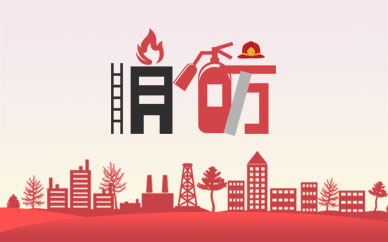
英语阅读是英语教学的重要内容之一,也是高考考察的重要内容,英语阅读中故事性的文章比较容易理解,然而英语科普语篇学生理解比较困难,下面就是小编给大家整理的英语科普文章,希望大家喜欢。
Scientists at MIT and elsewhere have identified the "first fingerprints1 of healing" of the Antarctic ozone2 layer, published today in the journal Science. The team found that the September ozone hole has shrunk by more than 4 million square kilometers -- about half the area of the contiguous United States -- since 2000, when ozone depletion3 was at its peak. The team also showed for the first time that this recovery has slowed somewhat at times, due to the effects of volcanic4 eruptions5 from year to year. Overall, however, the ozone hole appears to be on a healing path.
The authors used "fingerprints" of the ozone changes with season and altitude to attribute the ozone"s recovery to the continuing decline of atmospheric6 chlorine originating from chlorofluorocarbons (CFCs). These chemical compounds were once emitted by dry cleaning processes, old refrigerators, and aerosols7 such as hairspray. In 1987, virtually every country in the world signed on to the Montreal Protocol8 in a concerted effort to ban the use of CFCs and repair the ozone hole.
 (资料图)
(资料图)
"We can now be confident that the things we"ve done have put the planet on a path to heal," says lead author Susan Solomon, the Ellen Swallow Richards Professor of Atmospheric Chemistry and Climate Science at MIT. "Which is pretty good for us, isn"t it? Aren"t we amazing humans, that we did something that created a situation that we decided9 collectively, as a world, "Let"s get rid of these molecules"? We got rid of them, and now we"re seeing the planet respond."
Solomon"s co-authors include Diane Ivy10, research scientist in the Department of Earth, Atmospheric and Planetary Sciences, along with researchers at the National Center for Atmospheric Research in Boulder11, Colorado, and the University of Leeds in the U.K.
University of Montana researchers are giving the public its first look at the widespread use of herbicides on federal and tribal1 land in North America, and they urge land managers to better document it. Herbicides originally were developed to suppress weeds in crop agriculture. Today, they also are widely used in natural areas or "wildlands" to control non-native plants, which have arrived from other regions and can cause considerable ecological2 and economic harm.
While the magnitude of herbicide usage is well-documented for croplands, this new study is the first to reveal the amount of herbicides sprayed on wildlands.
UM researchers Viktoria Wagner and Cara Nelson, along with ecologists Pedro Antunes of Algoma University and Michael Irvine of Ontario Ministry3 of Natural Resources, discovered that more than 1.2 million acres of U.S. federal and tribal wildlands were sprayed with about 200 tons of herbicide in 2010.
"The numbers are much less than those for croplands, but they are astonishing," said Wagner, a former UM postdoctoral researcher who led the study. "Imagine: The wildland area sprayed by herbicides in that year is comparable to 930,630 football fields, and the amount of herbicides used equals the weight of 13 school buses."
Wagner said this amount is a conservative estimate, however, because data were not available for U.S. Forest Service land. The researchers used a survey to reach governmental offices and agro-statistical companies in the U.S., Canada and Mexico.
"It involved a lot of emails and phone calls to get the data we wanted," Wagner said, "but the effort was worthwhile."
The long-lasting effects of El Niño are projected to cause an intense fire season in the Amazon, according to the 2016 seasonal1 fire forecast from scientists at NASA and the University of California, Irvine. El Niño conditions in 2015 and early 2016 altered rainfall patterns around the world. In the Amazon, El Niño reduced rainfall during the wet season, leaving the region drier at the start of the 2016 dry season than any year since 2002, according to NASA satellite data.
Wildfire risk for the dry season months of July to October this year now exceeds fire risk in 2005 and 2010, drought years when wildfires burned large areas of Amazon rainforest, said Doug Morton, an Earth scientist at NASA"s Goddard Space Flight Center who helped create the fire forecast.
"Severe drought conditions at the start of the dry season set the stage for extreme fire risk in 2016 across the southern Amazon," Morton said.
The Amazon fire forecast uses the relationship between climate and active fire detections from NASA satellites to predict fire season severity during the region"s dry season. Developed in 2011 by scientists at University of California, Irvine and NASA"s Goddard Space Flight Center, the forecast model is focused particularly on the link between sea surface temperatures and fire activity. Warmer sea surface temperatures in the tropical Pacific (El Niño) and Atlantic oceans shift rainfall away from the Amazon region, increasing the risk of fires during dry season months.
The team also uses data on terrestrial water storage from the joint2 NASA/German Aerospace3 Center (DLR) Gravity Recovery and Climate Experiment (GRACE) mission to follow changes in groundwater during the dry season. GRACE measurements serve as a proxy4 for the dryness of soils and forests.
The NASA and UC-Irvine scientists have worked with South American official and scientists to make them aware of the forecast in recent years. Liana Anderson, a Brazilian scientist from the National Center for Monitoring and Early Warning of Natural Disasters (CEMADEN), said that "fire forecasts three to six months before peak fire activity are important to identify areas with higher fire probability for integrated planning in support of local actions."
看过“英语科普文章”的人还看了:
1.古老用英语怎么说
2.如何利用21世纪英语报学英语
3.高考英语复习专项练习题附答案
4.英语阅读理解解题技巧
5.科普书手抄报图片